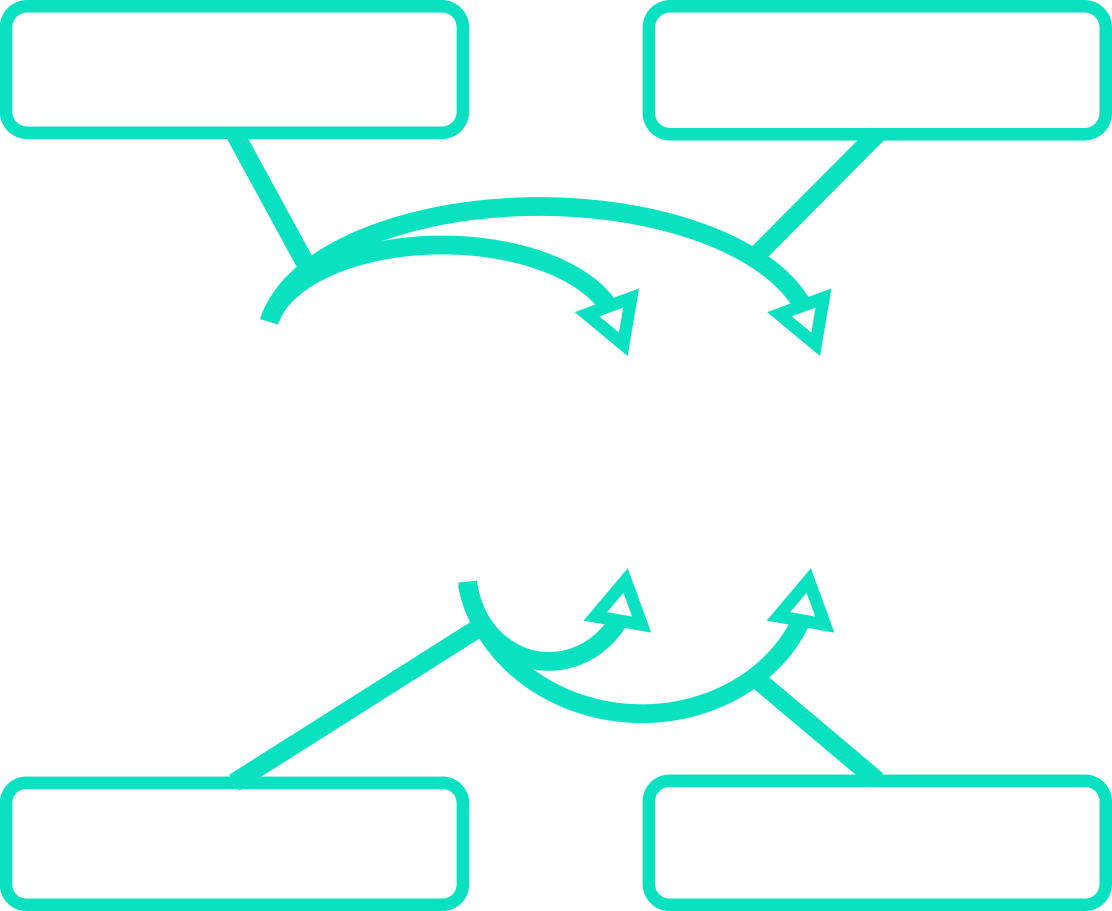Double Brackets
At this stage, you will be used to working with single brackets and be comfortable expanding these. You know that to expand single brackets you must make sure the term on the outside of the brackets multiplies all the terms on the inside individually. Some examples are given below to refresh your memory:
\begin{aligned}2(x+3)&=2x+6 \\[12pt]x(3x-2)&=3x^{2}-2x \\[12pt]4(x+y+z)&=4x+4y+4z\end{aligned}
When working with quadratic equations however, we often need to use double brackets. Expanding double brackets is basically just an extension of the idea used for single brackets: you have to multiply each term in the first bracket by each term in the second bracket individually:

The multiplications are performed in the order:
1) a\times c
2) a\times d
3) b\times c
4) b\times d
This process is often summarised using the acronym “FOIL” which stands for First, Outside, Inside, Last:

Some people find this tool a useful reminder, but if it’s at all confusing just remember: to expand two brackets you multiply everything in the second bracket by both terms in the first bracket.
Some worked examples should help you get used to the technique:
Example 1
Expand the following term: (x+2)(x+3)

\begin{aligned}=& x^{2}+3x+2x+6 \\[12pt]=& x^{2}+5x+6\end{aligned}
Example 2
Expand the following term: (2x-5)(2x+1)

\begin{aligned}=& 4x^{2}+2x-10x-5 \\[12pt]=& 4x^{2}-8x-5\end{aligned}
This expansion technique can be extended to cases where there are three terms in the second bracket (something which regularly comes up in exams!) The FOIL acronym only really applies directly in cases where there are two terms in both brackets, so in cases where the second bracket has three terms just remember: to expand two brackets you multiply everything in the second bracket by both terms in the first bracket.
Example 3
Expand the following term: (x-2)(2x^{2}+x-3)

\begin{aligned}=& 2x^{3}+x^{2}-3x-4x^{2}-2x+6 \\[12pt]=& 2x^{3}-3x^{2}-5x+6\end{aligned}
Key Outcomes
To expand two brackets, multiply each term in the first bracket by each term in the second bracket individually.
In cases where each bracket contains two terms, this process is often summarised using the acronym “FOIL” which stands for First, Outside, Inside, Last:







